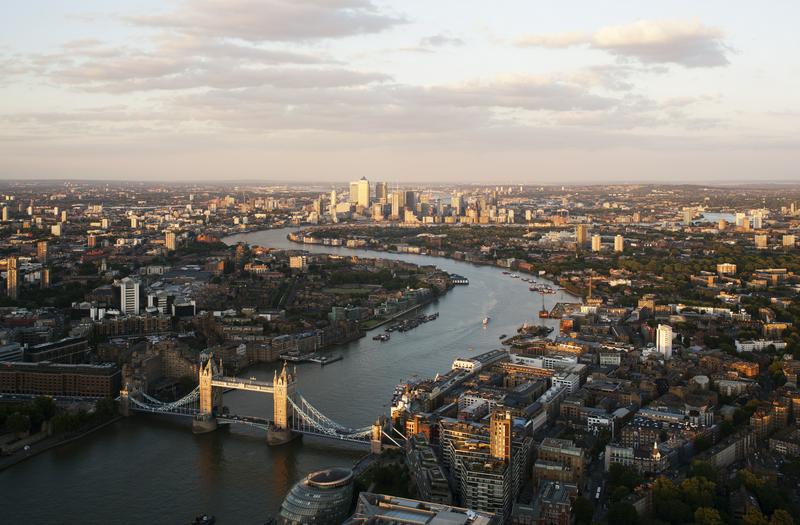Why Did London Stink in 1858?
By | May 9, 2019

Today, the River Thames in England is about as picturesque a city river as one might imagine and is often cited as one of the cleanest waterways in the world. However, this was not always the case. In the 19th century, the water was so polluted that it caused frequent cholera outbreaks culminating in the “Great Stink” of 1858. Curiously, it was this stench that created the modern city of London that we know today.

In 1801, the population of London stood at just a little over 1 million. By 1861, this number had tripled with increased population density. All these people went about their daily lives, working, socializing, eating, and using the loo. There were over 200,000 cesspits in the city and 360 sewers. Innovations in plumbing, such as the flush toilet put a greater burden on the system. The River Thames acted as the receptacle for raw sewage and sewage overflow; not only human but animal and industrial waste, too. Think of all the horses needed in a 19th-century city as well as numerous factories and slaughterhouses which dumped waste directly into the river. It was noted that at certain points of the shore, the toxic muck was six feet deep. The river was essentially biologically dead.
Finally, the Thames said no more.

The summer of 1858 was one of the hottest on record. Temperatures soared to over 100 degrees. The high heat and receding waterline of the Thames created the perfect conditions for the fermentation of all that waste. The river itself changed visually with the celebrated scientist Michael Faraday writing, “The whole of the river was an opaque brown fluid.” In order to test the river’s opacity, he dropped torn, white cards into the water. “Before they had sunk an inch below the surface they were indistinguishable, though the sun shone brightly at the time, and when the pieces fell edgeways the lower part was hidden from sight before the upper part was under water.”
One newspaper headlined, “Londoners, Look to Your River! The Thames a Deadly Cesspool!”
Then there was the river’s smell.

It is sometimes fortunate that museums, libraries, and archives are successful at preserving visual, aural, and sensorial artifacts, but have more or less failed at preserving the olfactory elements of human history. By all accounts, the combustible stench of excrement and industrial waste blended into a fiendish miasma was unforgettably awful. Parliament hung curtains soaked with lime chloride to arrest the odor. Prime Minister Benjamin Disraeli called the Thames “a Stygian pool, reeking with ineffable and intolerable horrors.” Queen Victoria canceled a pleasure cruise on the river due to the smell.

Thousands of poor still drank from the river or from water that had been contaminated by sewage. Many in previous years had died from regular outbreaks of cholera. Between 1831 and 1866 approximately 40,000 people died of the disease.
Interestingly, it was not the water which was considered dangerous, it was the smell. The odor was commonly thought to transmit diseases through noxious fumes, called miasma theory. It was this theory that promoted flushing toilets so that homes would be clean and fresh. This is fine, except that the waste ended up in the Thames exacerbating the cholera outbreaks.
So when the smell got this bad, and it lasted until August, the public was outraged enough that it (and the smell) pressured Parliament into action. On August 2, legislation was passed to create a new sewer system for London.

The city engaged engineer Joseph William Bazalgette, who had been planning a massive sanitation system for years only to have his ideas rejected. The city raised £3 million and told Bazalgette to proceed with all due speed.
The new massive sewer system essentially intercepted waste and surface water and rerouted them around the populated areas and out toward the mouth of the river. There were 82 miles of brick-lined main sewers to intercept overflow and 1,100 miles of street sewers to intercept raw sewage, which used to flow freely in the streets. The sewer lines were hidden in new embankments that were built over the river’s tidal foreshores which narrowed the river and sped it along to the sea. This moved waste through faster. Three major pumping stations were built, and the system was opened in 1865 although it was not fully complete until 1875. Bazalgette overdesigned the system for a population of up to 4.5 million.
As a result, cholera outbreaks declined with the last one being in 1866 in an area of the city not covered yet by the new sewer system. Bazalgette was knighted in 1875.

Today Bazalgette’s sewer is still in use but the population of London is over 8 million with a higher density. This is again putting a strain on the system. Yearly overflows of the system of up to fifty are common. In response, London is constructing the Thames Tideway Tunnel. This new 16-mile sewage line for a cost of over £4 billion is meant to capture all the sewage overflows and upgrade the city’s infrastructure for the future. It is expected to be completed in 2023.

